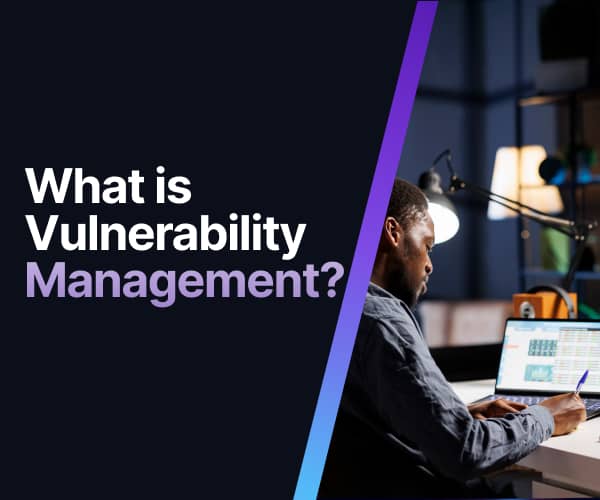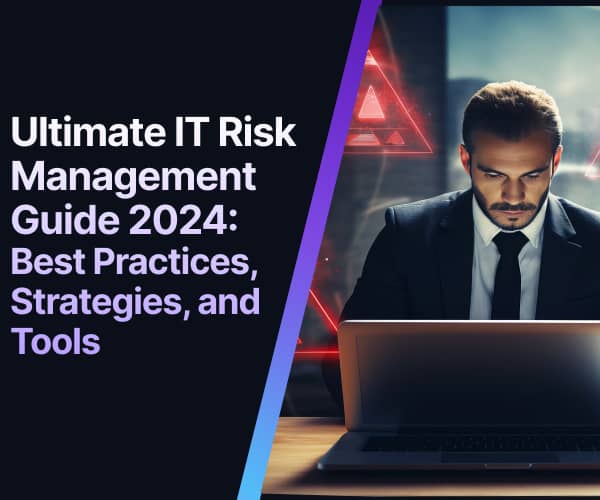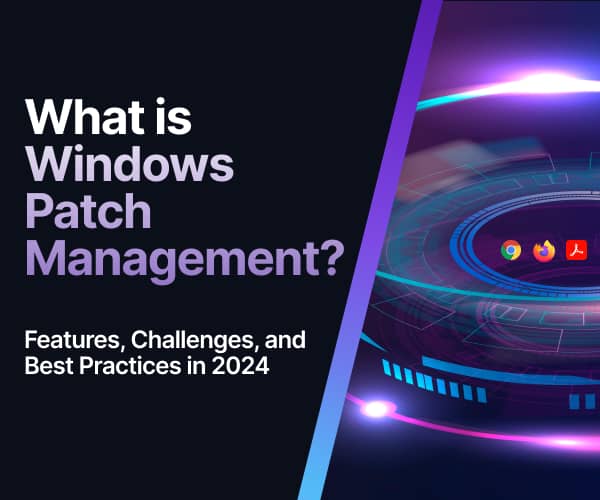What is Vulnerability in Cybersecurity?
 In the pulsating heart of our digital era, the specter of cybersecurity vulnerabilities looms large, casting a shadow over the sanctity of organizational data. A cybersecurity vulnerability, at its core, signifies any flaw within an organization’s internal controls, system procedures, or information systems. Maintaining constant vigilance is crucial for preventing unauthorized access and data breaches. These vulnerabilities, stemming from flaws, features, or user errors, act as potential entry points for cybercriminals, who frequently exploit them to achieve their malicious goals.
In the pulsating heart of our digital era, the specter of cybersecurity vulnerabilities looms large, casting a shadow over the sanctity of organizational data. A cybersecurity vulnerability, at its core, signifies any flaw within an organization’s internal controls, system procedures, or information systems. Maintaining constant vigilance is crucial for preventing unauthorized access and data breaches. These vulnerabilities, stemming from flaws, features, or user errors, act as potential entry points for cybercriminals, who frequently exploit them to achieve their malicious goals.
As data morphs into a new form of currency, its escalating value necessitates a robust understanding and proactive management of these lurking digital pitfalls. Cybercriminals are constantly looking for vulnerabilities in an organization’s control systems, procedures, or information systems. The need for unceasing vigilance has never been more pressing.
Penned by the experts at Easy2Patch, this blog post embarks on a journey into the labyrinth of cybersecurity vulnerabilities. We delve into various types of cybersecurity vulnerabilities, provide examples, and share effective management strategies to help businesses enhance their digital security.
Causes of Cybersecurity Vulnerabilities
Numerous factors contribute to cybersecurity vulnerabilities, including system complexity, familiarity with common code, poor password management, internet threats, software bugs, unchecked user input, and human errors. Addressing these factors requires a multifaceted approach, including cybersecurity awareness training and proactive risk mitigation strategies.
What are the Common Types of Vulnerabilities?
Software vulnerabilities are the Achilles' heel of cybersecurity. These vulnerabilities come in various forms, each with unique characteristics and potential impacts. Let's delve deeper into these key vulnerabilities:
Software Vulnerabilities
Software vulnerabilities, like inadequate testing, design flaws, and input validation errors, serve as attractive entry points for cybercriminals. Attackers exploit these weaknesses by deploying malware tailored to exploit these specific vulnerabilities. The Heartbleed Bug in OpenSSL is a notable example. This critical flaw allowed cybercriminals to pilfer sensitive data safeguarded by SSL/TLS encryption, ensuring secure internet communications.
Misconfigurations
Misconfigurations, resulting from network or system settings errors, silently invite cyber threats. Attackers actively scan networks for these misconfigured devices, exploiting them to gain unauthorized access, view sensitive data, or execute malicious activities within compromised networks. One real-world illustration of misconfigurations is the Amazon S3 Misconfiguration Attacks, where organizations faced data breaches due to unsecured storage buckets on Amazon's popular S3 storage service.
Weak Passwords
Weak passwords act as wide-open doors for cybercriminals. Using automated tools and methods like brute-force attacks, attackers crack weak passwords, compromising accounts and sensitive data. A striking example is the $100 Million Google and Facebook Spear Phishing Scam, where attackers exploited weak passwords to trick specific employees into depositing money into fraudulent accounts.
Social Engineering AttacksSocial engineering attacks prey on human trust, employing tactics like phishing and impersonation to extract confidential information. These attacks manipulate individuals into divulging sensitive data, enabling cybercriminals to perpetrate various fraudulent activities. The 2016 Democratic Party incident serves as a glaring example, where spear phishing attacks led to the leak of emails and information, potentially influencing a significant political event.
Consequences of Exploiting Vulnerabilities
Exploiting vulnerabilities can have profound and far-reaching consequences for organizations. These vulnerabilities, often unknown to software creators or vendors, provide opportunities for malicious actors. When attackers exploit these vulnerabilities:
- Data Breaches: Sensitive information becomes compromised, leading to severe repercussions. Zero-day vulnerabilities can directly impact policyholders' data and intellectual property in sectors like the insurance industry. The time gap between exposure and discovery allows attackers to exploit data for extended periods.
- Malware Infections: Operations suffer disruption due to malware infections stemming from these vulnerabilities. If unaddressed, zero-day vulnerabilities can lead to exploits, backdoor access, and unsecured channels, disrupting critical operations. Businesses must enhance visibility to identify blind spots related to zero days and swiftly develop countermeasures.
- Unauthorized Access: Attackers exploit vulnerabilities to gain unauthorized access to sensitive systems, causing significant harm to organizations. Mitigating these vulnerabilities renders the exploits useless, emphasizing the importance of prompt and effective vulnerability management.
Financial Losses, Reputation Damage, and Legal Repercussions
The fallout from these exploits extends to substantial financial losses and reputational damage. Exploitation can result in the theft of sensitive information, disrupting critical operations. Long-term consequences include eroded trust in the company's systems, emphasizing the need for proactive security measures and timely patching to safeguard against such exploits.
What is Proactive Vulnerability Management?
Proactive vulnerability management goes beyond traditional security approaches, becoming a necessity in the face of sophisticated cyber threats. Let's delve into the key components that make up effective vulnerability management and explore why implementing these practices is vital for your organization's digital resilience.
Proactive vulnerability management means identifying and addressing potential weaknesses before malicious actors can exploit them. In an era where reactive measures often come too late, this proactive approach ensures your defenses remain sturdy in the face of ever-evolving cyber threats.
Effective vulnerability management encompasses a series of well-coordinated actions that form the bulwark of your digital security:
- Vulnerability Scanning: Think of it as your cybersecurity X-ray. Regular scans uncover hidden system weaknesses, providing you with the knowledge needed to reinforce your defenses. This practice fortifies your digital walls, making it challenging for cybercriminals to find a way in.
- Penetration Testing: Ethical hackers simulate real-world cyber attacks to assess your system's resilience. Their findings offer valuable insights, allowing you to patch up vulnerabilities and fortify your security measures effectively.
- Patch Management: Unaddressed software vulnerabilities are like open doors inviting trouble. Timely patch management ensures these doors remain sealed. By promptly applying software updates, you eliminate known vulnerabilities, making it exponentially harder for attackers to exploit your systems. Easy2Patch actively provides seamless patch management solutions, promptly addressing your software vulnerabilities and securely sealing your digital doors, offering robust protection against potential cyber threats.
- Employee Education: Human error remains a common entry point for cyber threats. Educating your staff about safe online practices and threat recognition empowers them to become vigilant gatekeepers. An informed workforce adds a layer of security, significantly reducing the likelihood of successful attacks.
Get started with our patch management software for free
Get 30 Day Premium TrialEmbracing vulnerability management practices offers several benefits:
- Reduced Risk: Proactively identifying and addressing vulnerabilities significantly diminishes the risk of costly data breaches.
- Improved Compliance: Many regulatory frameworks require regular vulnerability assessments. Compliance ensures your organization operates within a structured framework, reducing legal risks associated with data breaches.
- Enhanced Trust: Trust forms the cornerstone of any successful business relationship. Demonstrating a proactive commitment to cybersecurity builds trust with your customers and partners. When stakeholders know that their data is in safe hands, they feel confident engaging with your organization, fostering long-term relationships, and enhancing your reputation.
Best Practices for Vulnerability Management
Integrating these practices recommended by Easy2Patch experts into your vulnerability management strategy creates a multi-layered defense system. This approach detects vulnerabilities and actively works to mitigate them, enhancing your overall security posture.
Regular Scanning
Employ automated tools to perform routine scans on your systems. This proactive approach allows for the prompt identification of vulnerabilities, ensuring that potential threats are detected before attackers exploit them. Automated scanning saves time and provides a comprehensive overview of your system’s security posture.
Timely Patching
It is crucial to apply security patches and updates swiftly once they become available. These patches often address known vulnerabilities that malicious actors could exploit. An innovative solution like Easy2patch can streamline this process, ensuring efficient and timely updates, thereby reducing the opportunity for potential attacks. Organizations can leverage tools such as Windows Server Update Services (WSUS), Microsoft Intune, and System Center Configuration Manager (SCCM) to automate the deployment of these patches across their systems
Penetration Testing
Regular penetration testing is a critical component of a robust vulnerability management strategy. These tests simulate real-world attack scenarios to identify system weaknesses that might not be apparent during routine scans. By proactively identifying these vulnerabilities, organizations can prioritize remediation efforts and strengthen their defenses.
Access Controls
Implementing robust access controls and stringent password policies is essential in preventing unauthorized access to your systems. By limiting access points and enforcing strong password practices, you can significantly reduce the risk of unauthorized access and potential data breaches.
Employee Education
Lastly, fostering a cybersecurity-aware culture among employees is vital. Employees often serve as the first line of defense against cyber threats, so it’s essential to instill best practices for recognizing and countering potential threats. Regular training sessions and phishing mail tests can help employees stay updated on the latest threat landscapes and safe online behaviors.
Conclusion
This comprehensive guide has illuminated the intricate nuances of Vulnerability in cybersecurity, shedding light on their diverse forms and the significant threats they pose when left unaddressed.
At its essence, a cybersecurity vulnerability represents a chink in the digital armor, a weak point that opportunistic cybercriminals diligently exploit. Whether it's software vulnerabilities, misconfigurations, weak passwords, or the insidious tactics of social engineering, these vulnerabilities serve as entry points for malicious actors, jeopardizing data integrity and operational continuity.
The consequences of overlooking these vulnerabilities are profound and widespread. From crippling data breaches to disruptive malware infiltrations, the aftermath includes substantial financial losses, reputational damage, and legal entanglements. In this digital age, proactive measures are imperative.
So, why is addressing vulnerabilities a business imperative?The answer lies in the concept of proactive vulnerability management. It goes beyond being a strategy—it embodies a mindset and a commitment to safeguarding the core assets of any organization. Through meticulous vulnerability scanning, rigorous penetration testing, swift patch management, stringent access controls, and ongoing employee education, organizations can construct an impenetrable security shield.
In essence, adopting proactive vulnerability management practices is a strategic investment that pays dividends in trust, compliance, and operational stability.By staying ahead of the curve, embracing these proven best practices, and nurturing a culture of cybersecurity awareness, organizations can confidently stride into the digital future. They can do so securely in the knowledge that their data is protected, their operations are resilient, and their reputation remains untarnished. Easy2Patch stands out as a reliable choice for those who understand the value of proactive vulnerability management. Stay ahead of the curve, and invest wisely!
What do experts say about Vulnerabilities in Cybersecurity?

The cybersecurity landscape is currently at a critical juncture, with experts issuing grave warnings about vulnerabilities that could potentially dismantle the very foundations of our digital existence. Mario Greco, Chief Executive of Zurich Insurance Group AG, sounded a stark alarm, emphasizing the imminent threat of catastrophic cyberattacks that may soon surpass the private sector's capacity for coverage. Greco stressed the urgency of collaborative efforts, urging governments to establish public-private schemes to tackle systemic cyber risks. He highlighted the limitations of the insurance industry in the face of escalating cyber threats, underscoring the need for innovative solutions and international cooperation.
Adding to these concerns, Art Shaikh, CEO of Circleit and DigitalWill.com, shed light on the persistent issue of personal data security. He lamented the unrelenting sale and open market trading of personal data from social media platforms, painting a concerning picture of the precarious state of individual privacy. This alarming trend raises questions about the integrity of personal information in the digital age, urging immediate action to safeguard individual privacy and security.
Meanwhile, the Center for Internet Security (CIS) provided valuable foresight into the future of cybersecurity. Their predictions outlined a transformative landscape where automation in security operations would shift towards managed SOAR enablement, signifying a significant evolution in incident and alerting workflows. Additionally, CIS forecasted the rise of multi-cloud data infrastructure adoption, indicating a paradigm shift in how organizations manage their digital assets. They also highlighted the growing impact of artificial intelligence technologies, citing innovations like ChatGPT as influential factors shaping the cybersecurity landscape.
Amidst these expert insights, Steve Swick from American Electric Power stressed the urgency of addressing rising threats through proactive measures. He emphasized the importance of hiring top experts and conducting regular drills to bolster cybersecurity defenses. A report from UC Berkeley underscored the need for local policymakers to evaluate cybersecurity risks in smart city technologies case by case, recognizing the diverse challenges posed by emerging technologies. Concerns about vulnerabilities in election machines and healthcare systems demand enhanced security measures, with hospitals facing patient safety risks due to cyber threats.
In this landscape, regular updates and patches play a crucial role in safeguarding devices, while raising awareness about social engineering is essential to prevent cyberattacks. Cloud vulnerabilities have surged significantly, increasing by 150% in the past five years, necessitating robust security measures in organizations. Vulnerabilities in specific systems, such as FortiGate Firewalls, require immediate patching to prevent breaches and data compromises. Predictions indicate a continuous rise in cyberattacks, urging organizations to bolster their defenses and prioritize cybersecurity efforts.
The confluence of these expert opinions paints a daunting picture, highlighting the urgent need for comprehensive strategies, international collaboration, and innovative solutions to fortify our digital defenses against the looming threats that lie ahead. The vulnerabilities in our digital infrastructure demand immediate attention, urging stakeholders from various sectors to work together and invest in robust cybersecurity practices to safeguard our digital future.
Frequently Asked Questions
IT Automation Key Benefits and Best Practices

What Is Vulnerability Management?

Ultimate IT Risk Management Guide 2024: Best Practices, Strategies, and Tools

Best Practices for IT Infrastructure Management in 2024

What is Windows Patch Management? Features, Challenges, and Best Practices in 2024

What are the Cybersecurity Risks Associated with Outdated Software and Operating Systems?





